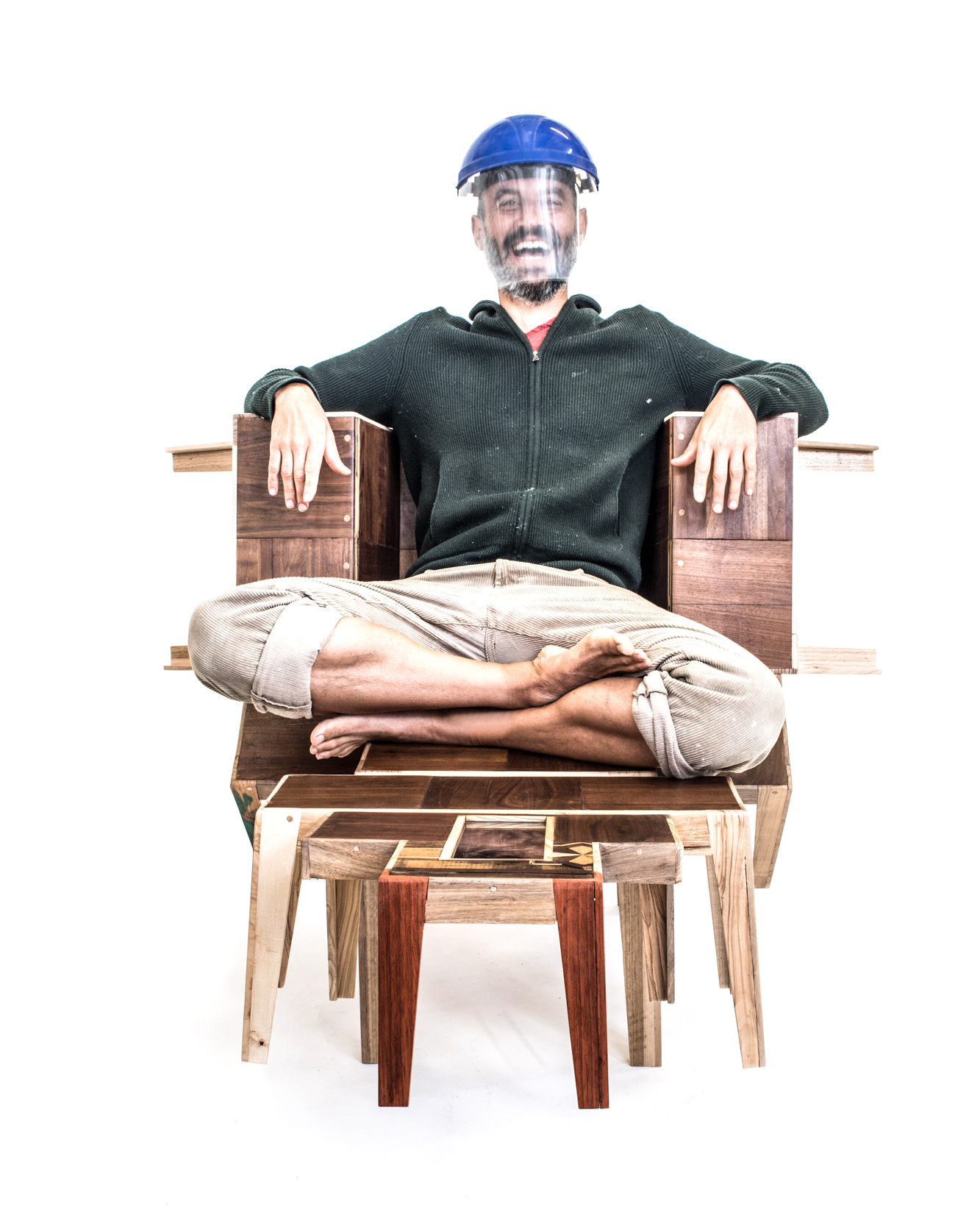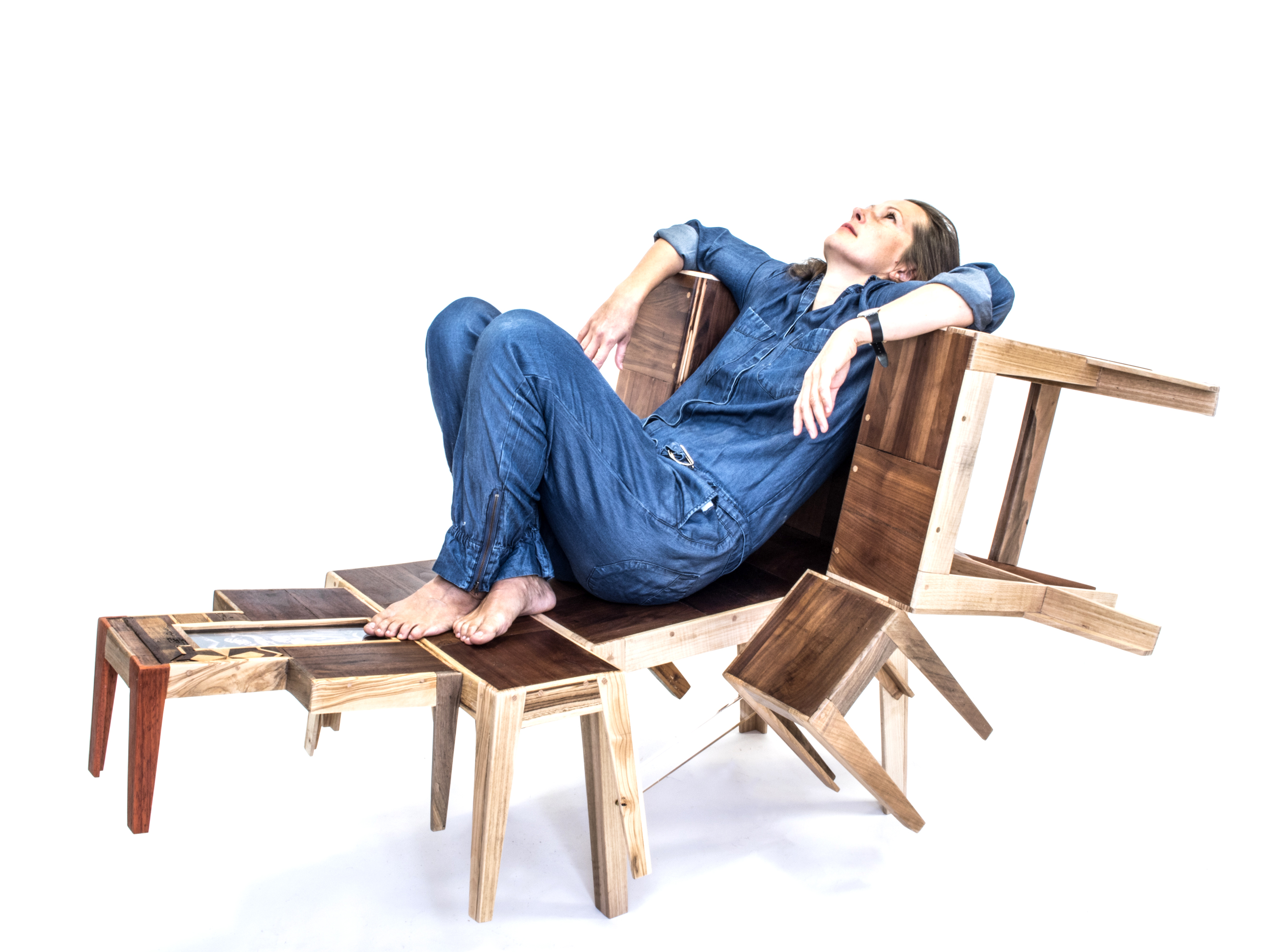Many poor stools made of walnut wood coming from a floor make one single important furnishing: a throne which turnes out to be as well a chaise longue.
The editions are more than unique because each throne changes on one hand by applying different stools and different woods and on the other hand because of the printed picture in the seat-back which determines the "meaning" of the throne. This one, which is the first edition, has been called Kamasutra due to the photographical image which shows a stone carving bas relief sculpture of a woman of a huge Hindu temple complex in Khajuraho, in the state of Madhya Pradesh in India.
The enormous quantity of sculptures, which were discovered in the beginning of the 20th century, prove the artistical-industrial production of the Chandela Rajput kings of Central India in the 10th-century. The amazingly short span of 100 years, from 950 AD - 1050 AD, saw the completion of all the temples, in an inspired burst of creativity. Today, of the original 85 temples, only 22 have survived the ravages of time.
Photo: Nat Wilms
It is certain, that the temples represent the expression of a highly matured civilization. One of the many theories is that the erotica of Khajuraho, and indeed of other temples, had a specific purpose. In those days when boys lived in hermitages, following the Hindu law of being "brahmacharis" until they attained manhood, the only way they could prepare themselves for the worldly role of 'householder' was through the study of these sculptures and the earthly passions they depicted.
The picture which changes in every edition gives the throne its specific meaning. You can try to make a game out of it: What happens to your perception if you put an image of coffee or slaves? What happens to the piece if you put an image of a moon, of black oil in the sea or a wrinkeld face of an old man, or a young woman? The throne, in specific this type of furnishing, definitely leads us towards questions of power.
Used materials: handcrafted walnut, mahogany, maple and olive wood, acrylic, lambda print
Dimensions: cm L 126 x D 100 x H 162 (46 cm sitting height) | unique edition of 10 + 1 a.p.
Design: Andrea Zambelli | Post-concept & Print: Nat Wilms










